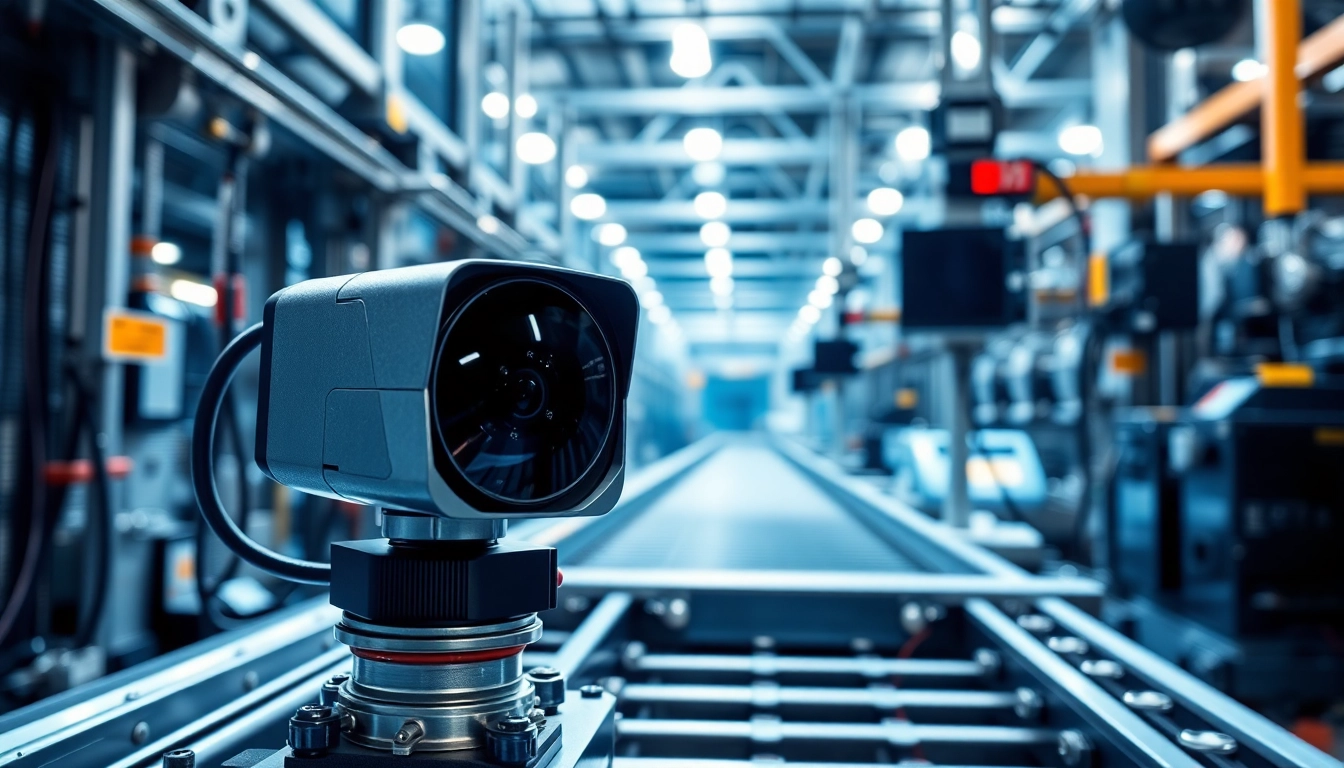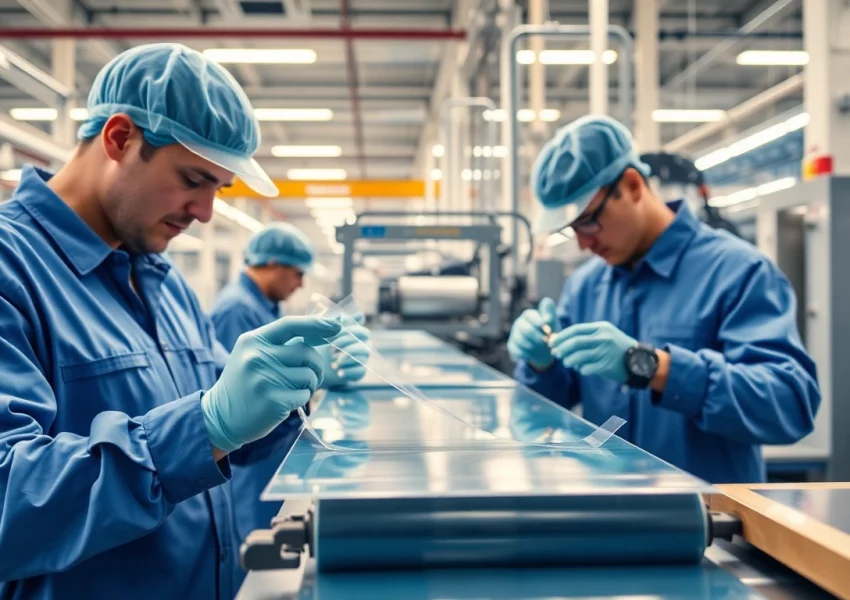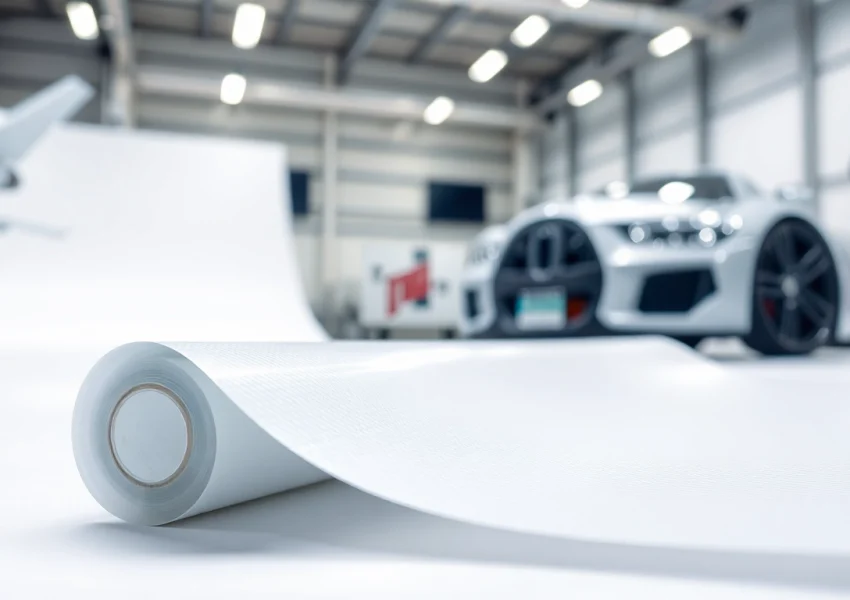What is Machine Vision?
Machine vision is a revolutionary technology that enables machines to interpret and analyze visual information, allowing them to perform complex tasks that were once only possible for humans. By leveraging this innovative technology, industries can achieve greater efficiencies, improve product quality, and enhance operational safety. With its wide-ranging applications, machine vision is at the forefront of automation and quality control processes. Its significance is underscored by its growing adoption across diverse sectors, including manufacturing, healthcare, and logistics. For a better understanding of how this technology impacts various industries, it is beneficial to explore the machine vision landscape in detail.
Definition and Core Principles
Machine vision involves the use of computers and digital imaging technology to examine and interpret visual information. The fundamental principles of this technology hinge on the ability of machines to ‘see’ and process images, much like human vision but with enhanced precision and speed. Core components include hardware such as cameras and sensors, software that supports image processing, and algorithms capable of making determinations based on visual input.
Key Components of Machine Vision Systems
A typical machine vision system comprises several key components that work in conjunction to achieve accurate image capture and analysis:
- Cameras: These are the primary devices used to capture images. High-resolution cameras are often employed to ensure clarity and detail.
- Lighting: Proper illumination is crucial for obtaining clear images. Different lighting techniques, such as backlighting or diffuse lighting, can be used depending on the application.
- Image Processing Software: After capturing images, software processes these visuals to identify patterns, defects, or anomalies.
- Computing Hardware: This includes processors and graphic cards capable of handling intensive data processing requirements.
- Actuators: In some applications, mechanical components react to the outcome of the vision system, enabling automated responses.
Difference Between Machine Vision and Computer Vision
While the terms machine vision and computer vision are often used interchangeably, they refer to different concepts. Machine vision typically focuses on automated processes in industrial environments, where specific tasks such as inspection, measurement, and guidance are automated. On the other hand, computer vision is broader and involves enabling machines to interpret images and video data, akin to human perception, with applications ranging from facial recognition to autonomous vehicles. Understanding this distinction is vital for choosing the right technology for specific applications.
Applications of Machine Vision in Industry
Machine vision technology is widely applied across various industries, enabling transformative changes that streamline processes and enhance performance. Here are some of the most prevalent applications:
Quality Control and Inspection
One of the most critical applications of machine vision lies in quality control and inspection. By employing cameras and imaging technology, industries can automate the process of inspecting products for defects. For instance, in the manufacturing sector, machines can quickly check for irregularities, ensuring that only products meeting quality standards reach customers, thus reducing waste and improving satisfaction. Statistical Process Control (SPC) can be integrated to continuously monitor performance and facilitate proactive quality assurance measures.
Automation in Manufacturing Processes
Machine vision plays a pivotal role in automating manufacturing processes, improving efficiency and consistency. In assembling components, visual guidance can help ensure parts are correctly placed, significantly reducing the risk of errors. Robotics equipped with machine vision can read barcodes or identify correct locations for pickups, leading to more streamlined operations. A case in point includes automotive assembly lines, where it helps in verifying assembled parts and ensuring compliance with manufacturing specifications.
Integration in Robotics and AI
The integration of machine vision with robotics and artificial intelligence is burgeoning, enabling machines to not only ‘see’ but also learn and adapt to their environments. For instance, robotic arms used in warehouses leverage machine vision to navigate spaces, pick items, and even interact with humans. This synergy allows for more intelligent systems capable of complex decision-making. Advancements in AI-driven analysis are enhancing these capabilities, enabling predictive maintenance and advanced anomaly detection, which can anticipate equipment failures before they occur.
Benefits of Implementing Machine Vision
The adoption of machine vision offers numerous advantages across the spectrum of operations within various industries. Some notable benefits include:
Cost Efficiency and Time Savings
One of the most prominent benefits of machine vision is its potential for substantial cost savings. By automating repetitive tasks such as inspection and measurement, companies can minimize labor costs while increasing throughput. For example, a manufacturing plant that implements machine vision for quality checks may reduce inspection times from hours to minutes, allowing for more efficient use of resources and faster product distribution.
Enhancing Product Quality and Consistency
Machine vision ensures high levels of accuracy in inspections, resulting in improved product quality. Consistent monitoring and analysis can quickly highlight deviations from established quality standards, enabling immediate corrective actions. Numerous studies indicate that businesses utilizing machine vision systems report lower rates of product recalls and higher customer satisfaction scores, as the likelihood of defects reaching the consumer diminishes significantly.
Improving Safety in Industrial Settings
In addition to enhancing quality, machine vision can also improve safety in industrial environments. By monitoring operations in real-time, machine vision systems can detect unsafe conditions, alerting staff to take preventive measures. Moreover, automating hazardous inspection tasks reduces the risk of injury to employees. This dual role of enhancing productivity while prioritizing safety is invaluable, particularly in sectors with high accident rates.
Challenges and Considerations
While the advantages of machine vision are compelling, several challenges must be considered to ensure successful implementation:
Technical Limitations and Solutions
Machine vision systems are not without limitations. Issues such as inadequate lighting, difficult-to-inspect materials, or variations in product appearance can hinder performance. To mitigate these challenges, organizations must use advanced lighting techniques and select the appropriate camera technologies. Implementing machine learning algorithms can also enable systems to adapt to variations automatically, improving reliability over time.
Understanding the Learning Curve
Implementing machine vision systems often requires a degree of specialized knowledge that may not be readily available within the workforce. Training personnel to operate and maintain these systems is essential for maximizing their potential. Organizations can invest in comprehensive training programs, including simulations and hands-on workshops, to facilitate a smoother transition and boost competency levels among employees.
Integration with Existing Systems
Integrating machine vision technology into existing processes poses another significant challenge. Organizations must consider how new technologies can coexist with legacy systems. Conducting a thorough assessment prior to implementation can ensure that the appropriate infrastructure is in place to support machine vision technologies. Collaboration with experienced vendors can also ease the integration process and ensure a more seamless transition.
Future Trends in Machine Vision Technology
The future of machine vision technology holds exciting possibilities. Several trends are already shaping the landscape and will continue to influence its evolution:
Advancements in AI and Machine Learning
The integration of AI and machine learning is propelling machine vision technology forward, leading to more intelligent systems capable of self-improvement. As AI algorithms become more sophisticated, machine vision systems will be able to recognize and adapt to patterns in data more effectively, thereby improving their accuracy and functionality. In particular, deep learning techniques are enabling machines to emulate human-like decision-making, which can revolutionize the ways businesses approach complex visual tasks.
Emerging Technologies in Machine Vision
Innovative technologies, such as 3D imaging and hyperspectral imaging, are emerging to enhance the capabilities of machine vision systems. These technologies can provide more detailed information about objects, allowing for improved analysis in various applications ranging from agriculture to pharmaceuticals. The adoption of edge computing for data processing within machine vision systems will also enhance real-time decision-making capabilities, providing organizations with insights that can drive operational efficiencies.
Predictions for Industry Growth
As machine vision technology matures, its adoption is expected to increase across various sectors. The ongoing push towards automation, especially in manufacturing and logistics, is a significant driver of this growth. According to market analyses, the machine vision market is projected to expand significantly over the next few years, supported by increasing demand for quality assurance and the continuous enhancement of imaging technologies. Companies that integrate machine vision into their operations early can gain a competitive edge and position themselves for sustained success in the evolving industrial landscape.






